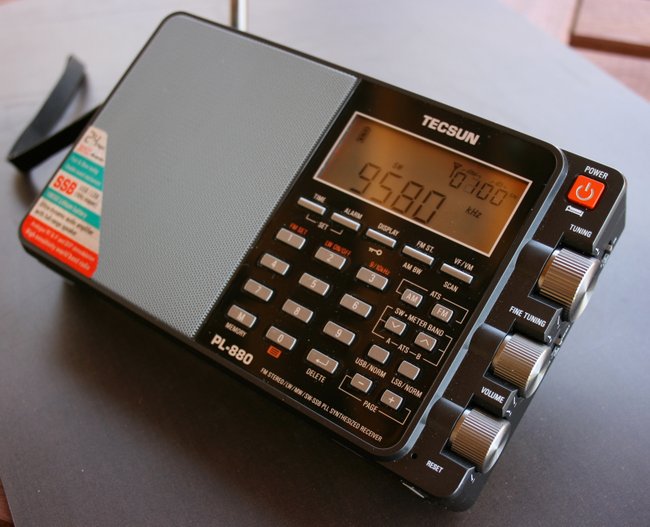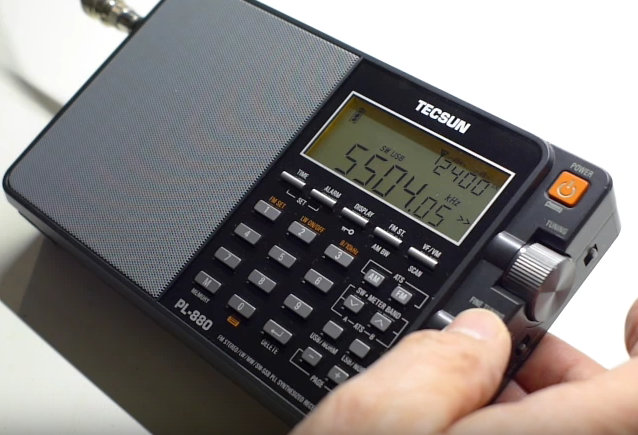Many thanks to SWLing Post contributor, Paul Walker, who shares the image above and the following:
How about a video [from Galena, AK]? Here’s one I shot on the evening of April 15th while DXin’g and apparently logging Radio Bandeirantes 9645 kHz in Brazil:
https://www.youtube.com/watch?v=i7fnLA9aYvA
Looks like a beautiful DX location you’ve got there, Paul. You’ve obviously found ways to mitigate receiver overload from the broadcast station with the number of loggings you’ve been posting as of late.
Indeed, Paul recently forwarded the following sample of logs from this very DXing spot. Paul writes:
Unless otherwise noted, all loggings were from a Tecsun PL-880 with an 80 foot long wire 5 feet up in a tree. My location is Galena, Alaska which is a village of 500 people about 300 miles east of Nome, Alaska and 300 miles west of Fairbanks, Alaska.
Comments questions or thoughts always welcome!
I was able to log Channel Africa broadcasting in French on 15235 kHz, two mornings last week.
This recording was made on Friday April 8, 2015 at 8:45 AM Alaska Daylight Time/1645UTC. I would rate the signal about 6 1/2 out of 10 with good audio, some light fading and no interference.
https://www.youtube.com/watch?v=ZAvB-s7GeG4
This recording was made on Wednesday April 6, 2015 at 8:37 AM Alaska Daylight Time/1637UTC. The signal was about a 6 out of 10 with moderate fading, a little more then the recording made on April 8th.
https://www.youtube.com/watch?v=vylScGVsYfM
Radio Thailand 9390 kHz
This recording was made on Saturday April 9, 2015 at 10:36 AM Alaska Daylight Time/1836UTC. I would rate the signal about 7 1/2 to 8 out of 10 with good audio, some light fading and no interference.
https://www.youtube.com/watch?time_continue=31&v=nKwKakToMNs
Voice of Indoneisa 9526 kHz
This recording was made on Saturday April 9, 2015 at 10:36 AM Alaska Daylight Time/1836UTC. I would rate the signal about 4 1/2 out of 10 with ok audio, some light to moderate fading and some interference.
https://www.youtube.com/watch?v=06ZvqXEVhyE
Voice of Vietnam 9625 kHz
This recording was made on Saturday April 9, 2015 at 9:00AM Alaska Daylight Time/1700UTC. I would rate the signal about 4 out of 10 with fair audio, some light to moderate fading and little interference.
https://www.youtube.com/watch?v=39s2HNJmHEs
All India Radio 11620 kHz
This recording was made on Saturday April 10 , 2015 at 1:29PM Alaska Daylight Time/2129UTC. I would rate the signal about 6 out of 10 with GOOD audio, some light to moderate fading and no interference.
https://www.youtube.com/watch?v=89QJHdZyVKU
Note: This was by FAR the best reception I’ve ever had of AIR. Their audio is usually pretty piss poor with poor quality and low modulation. Plus, their signal just isn’t that good usually.
I have also logged Voice Of Korea on 2850, 3320, 6100, 6400, 12015, 7220, 11910, 11935, 11735, 15105, 15180, 13760, 13650, 7580, 9650, 9875, 9445, 9665, 9425, 6170 and 3250 kHz.
Radio Algerienne Holy Quran and Radio Saudi are fairly regular visitors here and at times, pretty strong.
6160 kHz via Vancouver is heard several times a week…sometimes just barely, and other times, like a few days ago, nearly like a local.
The upper bands, 15 and 17 MHz seem to do real well here, especially by day, even smack in the middle of the day. I’ve heard RFI and DW via Issoudun right around lunch time in the 15 MHz area of the band.
I get Zanzibar on 11735 kHz from time to time…usually at least at fair levels.
CFRX 6070 is heard just about nightly, sometimes poor and barely audible but many times at least poor to fair and listenable. Now and then it’s pretty strong and listenable.
That is an impressive number of stations you’ve logged. It appears one of your easiest catches is Voice of Korea–I’m not surprised since you’re certainly within their broadcast footprint.
New Music Show and Contest
Many of you know that Paul also hosts an occasional music show via shortwave. Paul recently set times and frequencies for the next show–he notes:
I will be on WRMI, 7570 kHz from 0400-0600UTC Saturday June 2nd, Which is 12 midnight to 2 AM Eastern/9 PM to 11pm Pacific on Friday June 1st.
More oldies and rock n roll music with some country thrown in. I’m working on a CONTEST with some cool radio prizes and even bigger…. I am ironing out the technical details and going to try and do the 2 hot show live from my studio in Galena, Alaska.
My target audience this time with be the West Coast of the US and Canada. I expected the Midwestern US to get a good signal from the 315 degree beam towards Vancouver, Canada as it has to pass over the Midwest to get to the West Coast.
Contest details and QSL information to be released before the show!
I’ll plan to re-post this announcement, with any updates, closer to the broadcast date of June 2, 2016.
Thanks again, Paul, for sharing some of your radio world!



 Many thanks to SWLing Post contributor, Georges (F6DFZ), who writes:
Many thanks to SWLing Post contributor, Georges (F6DFZ), who writes: